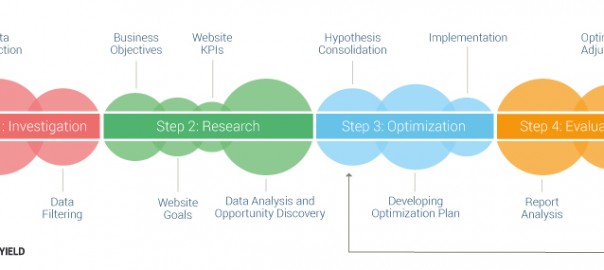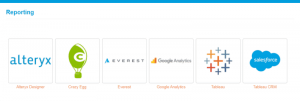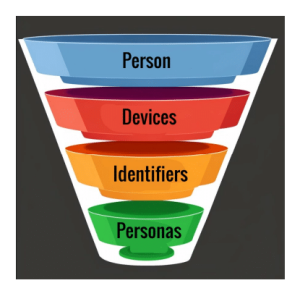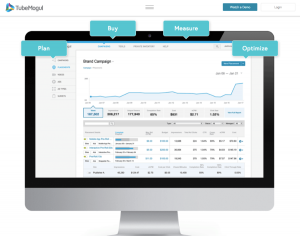Optimizing your website to ensure high conversion rates is one of the most important aspects of any marketing strategy. The thing is, it is also one of the toughest areas to deal with. Crafting a successful conversion optimization methodology is a tough and complex process. The only type of “magic” involved would be following a well-defined systematic process using strategic and methodical steps. Here’s a simple, yet effective, 4-step model for building a successful conversion optimization plan.
The 4-step Systematical Conversion Optimization Methodology Chart
This chart provides a bird’s eye view of the process, which suggests a systematic conversion optimization methodology. Each step in the process is represented with a unique color. The X-axis represents the elapsed time between the steps of the process; each circle represents the estimated capacity of the specific process in terms of work involved. Of course, in reality, the amount of work may vary from one case to another. Relatively speaking, the bigger the circle is, the more time consuming the task involved is for marketers.
 click chart to view in full size
click chart to view in full sizeStep 1: Investigation
This step has a clear and straightforward objective: to gain a high trust level with your web analytics data. Generally speaking, it is a two-part process:
- Data Collection – Auditing the technical implementation of your analytics tags is a crucial stage during which you are aiming at making sure the data is collected in a complete and effective way with minimum discrepancies and measurement gaps. In this step, you should be looking for implementation errors, missing data, untagged pages, etc.
- Data Filtering – Once you have completed the initial technical QA step, it is time to clean up the data, making it more readable and valuable for deep, upcoming analysis. There are many different ways of filtering out noise from your Google Analytics data. I would recommend you to start by consolidating duplications (such as duplicate URLs in the reports), filtering internal IP addresses, excluding bots and known spiders, implementing custom campaign parameters to your URLs, etc.
Step 2: Research
Now, when you trust the data and feel comfortable with its level of accuracy and organization, it is time to move forward and learn as much as possible about the business and its online activities:
- Business Objectives – The main questions you should be asking are why does the website exist and what are its objectives?
- Website Goals – The next part is to figure out what are the goals of the website are, which can help you achieve the desired business objectives. In other words: explore what the desirable outcomes of the business objectives are. For example: the objective of a retail site is to sell products, and, as a result, grow the business and increase revenue. So the goal of the website is to increase online sales.
- Website KPIs – Once goals are defined, it is time to figure out the specific metrics that are involved in the process of measuring the success or failure of the defined website goals. For example: if the website is a news publisher with goals to increase reader loyalty, possible KPIs would be: (1) Reducing bounce rate. (2) Increasing average pages per visit. (3) Increasing engagement within article pages. (4) Increasing the average time on site. (5) Increasing the percentage of returning visitors to the site.
- Data Analysis and Opportunity Discovery – At this point, you are already familiar with the business objective, goals and KPIs. In addition, you trust the data and are familiar with its structure and applied filtering. Now, it is time to dive deep and crunch the numbers, develop audience segments and look for pain points and opportunities to improve KPIs. Here are some basic examples of segmentation: (1) Device type: Set up audiences by device types – desktop and mobile. (2) Page category: Set up site variables on category pages to measure how well each individual category performs. (3) Traffic sources: Set up audiences by traffic source to measure how well the different marketing campaigns perform. (4) Customer type: Set up audiences by customer type to understand how different customers interact and impact the business.
Step 3: Optimization
Now, it would be a good time to take the opportunities you have discovered and put them into practice:
- Hypothesis Consolidation – The optimization process begins with consolidation of claims, or hypotheses, about potential changes to the site that may (hopefully) cause positive, desired outcomes. Do not confuse these statements with facts. These are not facts, but argued ideas that are based on data analysis and knowledge that you have gathered. They act as a starting point for the optimization process.
- Developing Optimization Plan – Based on your hypothesis, start building the optimization plan. In particular, explore what the specific changes are that you would like to implement and test by preparing the new copy, designing materials, and such.
- Implementation – Now, put all of the ideas into action and go live on the site. The time and effort that will be required from you in this step will vary depending on the accessibility and usability of your marketing optimization software. When implementing, remember to configure different content variations, as well as targeting conditions, and, if using website personalization software, content personalization triggers as well.
Step 4: Evaluation
Once enough data is gathered, it is time to analyze results and arrive at conclusions:
- Report Analysis – Explore the optimization reports, look for noticeable changes. Identify new audience segments, methodological pitfalls and find out where you succeeded. Do not be afraid of finding failed initiatives, they would only help you gain valuable insights about what is working better for your target audience.
- Optimization Adjustments – If necessary, modify your optimization initiatives with different targeting conditions and segments. Always double check yourself and preview the results to avoid any errors. Adjust and be patient. Depending on traffic, it may take a while before getting high-confidence, sustainable results.
Closing Thoughts
Conversion optimization is not a linear process, but a circular one. It includes researching, testing and analyzing. Once you are done with the final evaluation step, it is a good idea to go back to Step 3 and formulate new hypothesis and optimization ideas. I hope that you will find the suggested key stages of the process useful and valuable to your own optimization efforts.
This article originally appeared on Dynamic Yield and has been republished with permission.
(238)
Report Post









